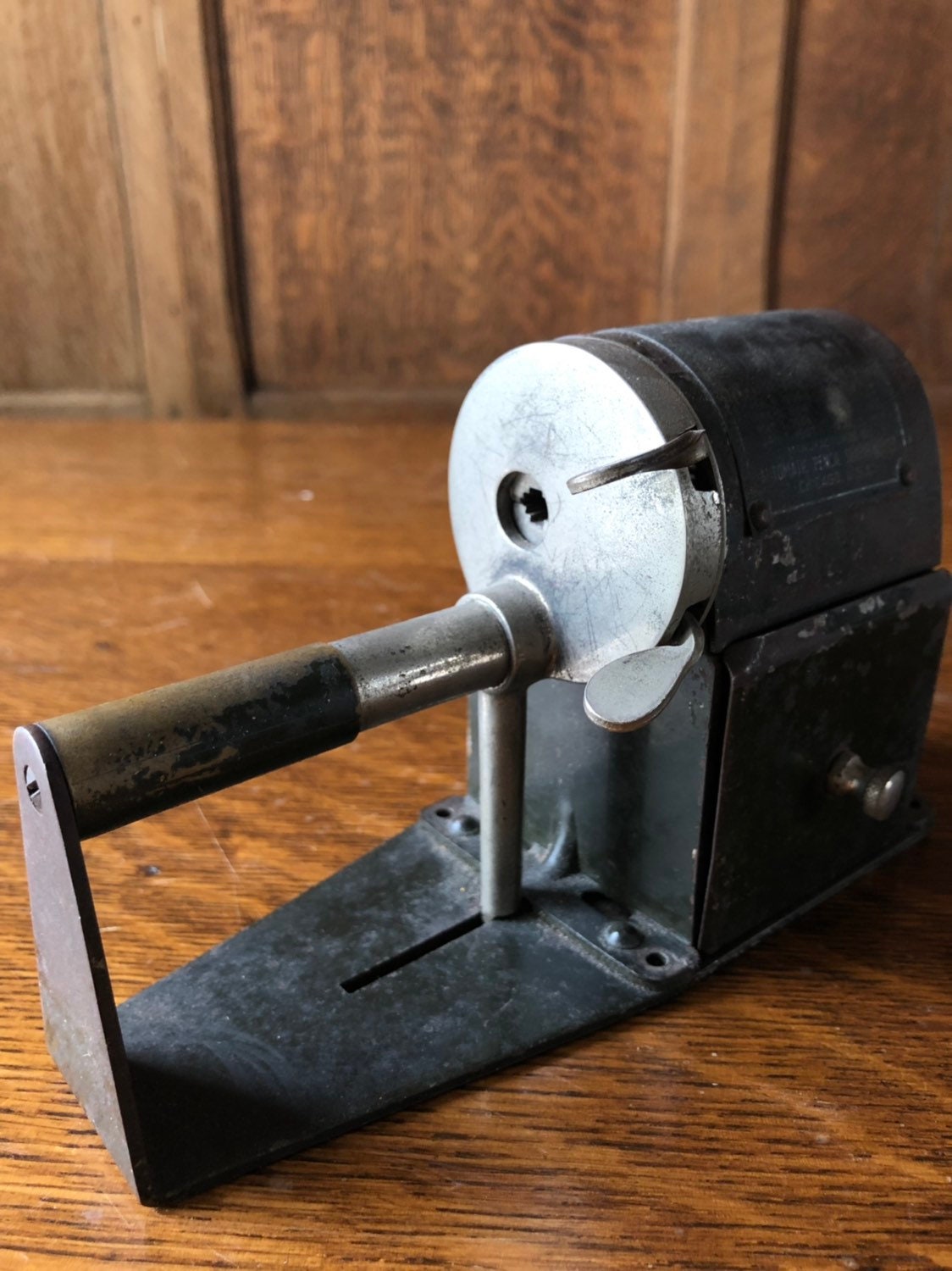
The Perfect Pencil Pointer was patented in 1890 and sold until the mid-1910s. This large antique pencil sharpener is 7.75” tall and weighs 5 lb. When you turn the crank, both the sandpaper disk and the pencil rotate. The Gem uses a rotating sandpaper disk 5.75” in diameter to sharpen the pencil. The Gould & Cook Gem Pencil Sharpener was patented in 1886 and sold until 1918. For example, the 1900 Challenge pencil sharpener simultaneously used a blade to cut the wood and sandpaper to sharpen the lead. Yet other machines use from one to a dozen or more blades. A few used two of these methods. Other machines use a steel milling cutter with multiple cutting edges. One category of antique pencil sharpener relies on abrasive media such as sandpaper or a steel file. During this three-decade period, commercially successful mechanical sharpeners embodied a wide variety of approaches to the central problems involved in sharpening a pencil, namely, to remove wood from the point and sharpen the lead, and either to rotate the pencil or to rotate the cutter around the pencil, all without breaking the lead.Īntique mechanical pencil sharpeners can be divided into three categories based on the cutting medium or mechanism.

between 18, scores of machines were introduced between 18. While a handful of mechanical pencil sharpeners were patented in the U.S. On the European continent, sharpeners with different technologies continued to be sold as late as the 1960s. (Click here to read about the history of lead pencils.) In the US, the period of innovation virtually ended in the mid-1910s, when pencil sharpeners employing twin planetary cylinders with spiral cutting edges (image to right) drove from the market machines with numerous alternative sharpening technologies that had co-existed for as long as twenty-five years. This work commenced in earnest shortly after mass production of wood-cased lead pencils with round leads began in the late 1870s. 650, Eagle Pencil Co., New York, NY, patented 1906īetween the 1880s and 1910s, numerous inventors and companies took up the challenge of supplying offices, schools, draftsmen, artists, and eventually homes with efficient machines to sharpen lead pencils.


Left: Eureka Pencil Sharpener, patented 1869 (Two images immediately below) For our exhibit of Small Pencil Sharpeners from 1837 to 1915, click here. Small handheld pencil sharpeners were popular beginning in the mid-19th century. Until the early 20th century, the most common method of sharpening pencils was whittling with a pen knife.
#Mechanical pencil sharpener code#
Unfortunately, it appears that the newest version of Internet Explorer no longer recognizes the HTML code used for these moving pictures. You can see the movement if you use the Firefox browser. For example, a 79-degree angle shows more lead, while a 74-degree angle shows less.Īt Bunbougu, you’ll find the best pencil sharpeners to keep your wooden, colour or Japanese pencils sharp.This page and a number of other pages on this website have photos that show pencil sharpeners and staplers in motion to enable you to see how they work. Sharpening angle – Different sharpeners sharpen lead at different angles.Some sharpeners produce sharp, pointed tips. Lead point – Also consider how pointed you prefer your lead.However, there are larger sharpeners, designed for pencils up to 10.5mm wide. Size – The standard size accommodates a pencil with a diameter of 8mm.However, some sharpeners are made for specific shapes. Generally, all pencil sharpeners can accommodate these shapes. Shape – Wooden pencils and colour pencils come in circular, triangular and hexagonal shapes.Here are some things to keep in mind when purchasing a sharpener. Some include: whether you have wooden pencils or coloured pencils, the type and quality of the pencil, what it is used for and more. There are many factors to consider when choosing a pencil sharpener. Hand-operated – When you turn the pencil manually, the razor shaves the wood and graphite from the sides of your pencil.Electric – These have an interior motor which makes the razor rotate and sharpen the pencil quickly.Broadly speaking, sharpeners are available in two types: Shaving off wood around the pencil tip, a sharpener keeps the pencil tip sharp and pointed.


 0 kommentar(er)
0 kommentar(er)
